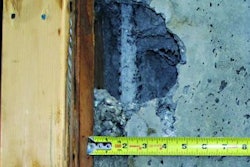A bipartisan deal on policy and spending provisions of the highway section of the surface transportation reauthorization has been reached by Senate Environment and Public Works Committee Chairman Barbara Boxer (D-CA) and Ranking Member Jim Inhofe (R-OK). The bill has not yet been released, but Senators Boxer and Inhofe issued a 3 page outline of their bill on Tuesday. The bill, called Moving Ahead for Progress in the 21st Century (MAP -21) would provide $86 billion in contract authority for the federal highway program over the next two years.
The challenge with this funding level – which is equal to current authorized levels under SAFETEALU – is that it requires the Senate Finance Committee to come up with $12 billion in funding to make the Highway Account of the Highway Trust Fund solvent. At the MAP-21 hearing today, Senator Inhofe and other Republicans on the EPW Committee pledged their support for the bill at current funding levels but cautioned EPW should not move forward with a bill until the Finance Committee finds the $12 billion. Finance Chairman Max Baucus (D-MT), who is also Chairman of the EPW Subcommittee with jurisdiction over the Federal highway program, made it clear that he is doing all that he can to come up with the $12 billion, but nothing can be done until the debt ceiling debate is completed. This puts Senator Boxer’s self-imposed timetable of marking up a bill before the August recess in jeopardy, considering Ranking Members Inhofe, Chairman Baucus, and Republican EPW members do not want to go to mark-up without funding in place.
AGC will continue to work with members on the EPW and Finance committees to ensure the financing is in place before a final bill is marked-up.
As for the bill itself, according to the outline, the bill addresses several of AGC recommendations for the reauthorization bill, including:
Core Programs:
- Continues to provide the majority of funding to the States through core programs but consolidates the programs from seven to five:
-
- The National Highway Performance Program
-
-
- Interstate Maintenance, National Highway System, and part of the Bridge program
- Provides states with increased flexibility if they adequately maintain the condition of their Interstate system and bridges
-
-
- The Transportation Mobility Program:
-
-
- Consolidates several existing programs to provide funds to States for projects on all Federal-aid highways and all bridges and tunnels
- Provides sub-allocation of some funds to metropolitan areas and other areas in the State based on population
-
-
- National Freight Program
-
-
- Provides formula funds to States for projects to improve the movement of freight on highway, including freight intermodal connectors.
-
-
- Congestion Mitigation and Air Quality Improvement Program
-
-
- Provides funds to States for projects and programs in air quality nonattainment and maintenance areas for ozone, carbon monoxide, and particulate matter, which reduce transportation related emissions.
-
-
- Highway Safety Improvement Program
-
-
- Provides funds to States for infrastructure improvements on all public roads to achieve a significant reduction in deaths and injuries.
-
TIFIA Expansion
- Expands TIFIA financing from $122 million per year to $1 billion
Accelerated Project Delivery
- Expands the use of innovative contracting methods
- Creates dispute resolution procedures
- Allows for early right-of-way acquisition
- Reduces bureaucratic hurdles for projects with no significant environmental impact
- Encourages early coordination between relevant agencies to avoid delay later in the review process
Performance
- Focuses the highway program on key outcomes such as reducing fatalities, improving bridges, fixing roads, and reducing congestion.
- States will set their own targets
Planning
- The bill intends to improve the Statewide and metropolitan planning process to incorporate a more comprehensive performance based approach to decision making.
Again, this is just an outline and most of the big questions will be answered if/when the full text of the bill is released prior to a bill being marked up.

















